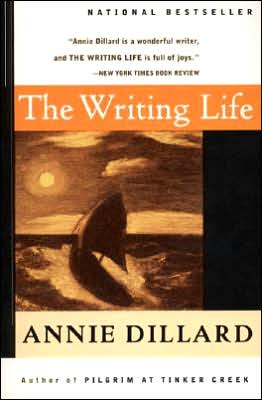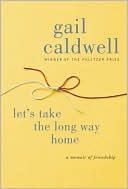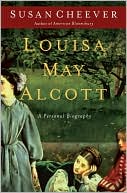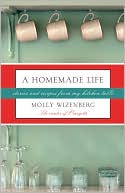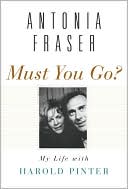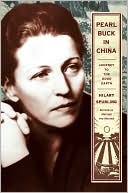The Writing Life
Annie Dillard has written eleven books, including the memoir of her parents, An American Childhood; the Northwest pioneer epic The Living; and the nonfiction narrative Pilgrim at Tinker Creek. A gregarious recluse, she is a member of the American Academy of Arts and Letters.\ \ \ With color, irony and sensitivity, Pulitzer prize-winner Annie Dillard illuminates the dedication absurdity, and daring that is the writer's life. As it probes and exposes, examines and...
Search in google:
Annie Dillard has written eleven books, including the memoir of her parents, An American Childhood; the Northwest pioneer epic The Living; and the nonfiction narrative Pilgrim at Tinker Creek. A gregarious recluse, she is a member of the American Academy of Arts and Letters. Boston Globe A kind of spiritual Strunk & White, a small and brilliant guidebook to the landscape of a writer's task...Dillard brings the same passion and connective intelligence to this narrative as she has to her other work.
Chapter One\ When you write, you lay out a line of wards. The line of words is a miner's pick, a woodcarver's gouge, a surgeon's probe. You wield it, and it, digs a path you, follow. Soon you find yourself deep in new territory: Is it a dead end, or have you located the real subject? You will know tomorrow, or this time next year.\ \ You make the path boldly and follow it fearfully. You go where the path leads. At the end of the path, you find a box canyon. You hammer out reports, dispatch bulletins.\ \ The writing has changed, in your hands, and in a twinkling, from an expression of your notions to an epistemological tool. The new place interests you because it is not clear. You attend. In your humility, you lay down the words carefully, watching all the angles. Now the earlier writing looks soft and careless. Process is nothing; erase your cracks. The path is not the work. I hope your tracks have grown over; I hope birds ate the crumbs; I hope you will toss it all and not look back.\ \ The line of words is a hammer: You hammer against the walls of your house. You tap the walls, lightly, everywhere. After giving many years' attention to these things, you know what to listen for. Some of the walls are bearing walls; they have to stay, or everything will fall down. Other walls can go with impunity; you can hear the difference. Unfortunately, it is often a bearing wall that has to go. It cannot be helped. There is only one solution, which appalls you, but there it is. Knock it out. Duck.\ \ Courage utterly opposes the bold hope that this is such fine stuff the work needs it, or the world. Courage, exhausted, stands on bakereality: this writing weakens the work. You must demolish the work and start, over. You can save some of the sentences, like bricks. It will be a miracle if you can save some of the paragraphs, no matter hogi excellent in themselves 'or hard-won. You can waste a' year worrying about it; or you can get it over with now. (Are you awoman, or a mouse?)\ \ The part you must jettison is riot only the bestwritten part; it is also; oddly, that part'which was to have been the very' point. It is the original key passage, the passage on which the rest was to hang; and from which you'yourself drew the courage to begin. Henry James knew it well, and said it best. In his preface to The Spoilt of Poynton, he pities the writer, in a comical pair of sentences that rises to a howl: "Which is the work in which he hasn't surrendered, under dire difficulty, the best thing he meant to have kept? In which indeed, before the dreadful done, doesn't he ask himself what has become of the thing all for the sweet sake of which it was to proceed to that ektremity?"\ \ So it is that a writer writes many books. In each book, he intended several urgent and vivid points, many of which he sacrificed as the book's form hardened. '"The youth gets together his materials to build a bridge to the moon," Thoreau noted mournfully, "or perchance a palace or temple on the earth and at length the middle-aged man concludes to build a wood-shed with them." The writer returns to these materials, these passionate subjects, as to unfinished business, for they are his life's work.\ It is the beginning of a work that the writer throws away.\ \ A painting covers its tracks. Painters work from the ground up. The latest version of a painting overlays earlier versions, and obliterates them. Writers, on the other hand, work from left to right. The discardable chapters are on the left. The latest version of a literary work begins somewhere, in the work's middle, and hardens toward the end. The earlier version remains lumpishly on the left; the work's beginning greets the reader with the wrong hand.
\ Chicago TribuneFor nonwriters, it is a glimpse into the tirals and satisfactions of a life spent with words. For writers, it is a warm, rambling, conversation with a stimulating and extraordinarily talented colleague.\ \ \ \ \ Boston GlobeA kind of spiritual Strunk & White, a small and brilliant guidebook to the landscape of a writer's task...Dillard brings the same passion and connective intelligence to this narrative as she has to her other work.\ \ \ Cleveland Plain DealerFor her book is...scattered with pearl. Each reader will be attracted to different bright parts...Gracefully and simply told, these little stories illuminate the writing life...Her advice to writers is encouraging and invigorating.\ \ \ \ \ Detroit NewsThe Writing Life is a spare volume...that has the power and force of a detonating bomb...A book bursting with metaphors and prose bristling with incident.\ \
